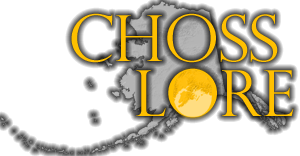Backdoor Gap
[Brief] New Back Doors Make New Backyards.
Published 5-16-2022 | Last updated 4-30-2022
61.862, -149.095
[Unofficial name, no GNIS Entry]
In 1971 the population of the entire Matanuska-Susitna Borough, stretching from Palmer to Talkeetna, was estimated at 7200 residents.[1] Independence Mine had been closed for twenty years, and would soon be added to the National Register of Historic Places.[2] But interest in recreational mountaineering in the Hatcher Pass area, which had started among the miners as early as the 1930s, still brought a steady trickle of visitors to the area.
The Mountaineering Club of Alaska, which had built a trio of alpine huts on the glaciers between Eklutna and Girdwood between 1964 and 1968, proposed and constructed a hut near the Mint Glacier at the head of the Little Susitna River in 1971. Miners’ cabins at Fern Mine and Snow Bird Mine had been refurbished and were used as shelters by then, but the new structure was the first purpose-built public mountain hut in the Talkeetna Mountains.[3],[4],[5] It was quickly branded the Mint Glacier Cabin and is still best known as the Mint Hut, although it is also known as the Rainery Hut in commemoration of Mark Rainery, an MCA member who died in an avalanche on New Year’s Day, 1974.
When the location for the Mint Hut was first proposed by MCA President Steve Hackett, he expressed hope that “a cabin in this area could provide a focal point for numerous summer and winter MCA activites.”[6] Fifty years later an astonishing amount of traffic has proved that dream true, but even shortly after its construction the presence of a shelter nine miles into the backcountry from a road inevitably changing how people recreated and thought about the area.
Several thousand feet above the Mint Hut, a narrow pass links the valleys of the Little Susitna River and Wintergreen Creek over the Pennyroyal Glacier. The Dena’ina would have been familiar with the Little Susitna River valley and the resources it could offer, and hardrock miners of the Willow Creek Mining District would have gone over the entire area with a fine-toothed comb, but no name is known from those groups for the little pass nestled at 5700 feet. Given that it led onto a glacier which promised no gold or game, it’s questionable whether it had ever been perceived as a ‘pass’ up until that point.
Dave Staeheli, a connoisseur of the Talkeetnas who has ‘minted’ many of the thematic names in the area, was by no means the first human to travel through the pass but we have him to thank for the name it’s known by today. In March 1982, on a trip with Dave Pahlke, John Dillman, and Grahme MacDonald he wrote in the Mint Hut Log “high haze thickening and lowering - decision was to try to ski across ridge through high gap to valley and glacier to west […] Did ski to top of prominent gap behind hut – ‘Backdoor Gap.’”[7],[8] And once again, new activities and new opportunities for access has opened doors to different ways of thinking about a landscape.
 The creation of this article was generously sponsored by a 2022 grant from the MEA Charitable Foundation.
The creation of this article was generously sponsored by a 2022 grant from the MEA Charitable Foundation.
Sources
[3] Rogers, Jim. “Fern Mine Trip” The Scree, Mountaineering Club of Alaska, June 1971.
[6] Hackett, Steve. “Huts and Cabins Committee” The Scree, Mountaineering Club of Alaska, July 1971.
[7] Staeheli, Dave. “March 25th – 27th / 1982.” Mint Glacier Hut Logbook (August 1979 – July 1983).
[8] Staeheli, Dave, in discussion with the author. April 2021.
